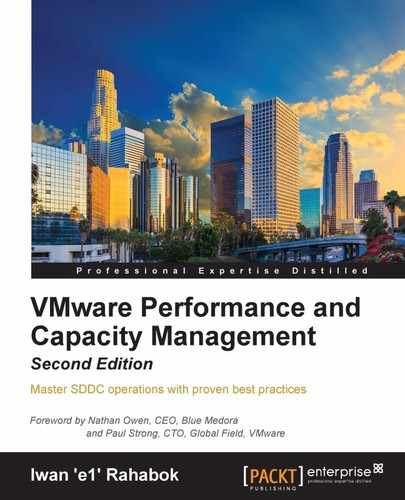The previous SLAs are for server workload. What about for VDI? To me, VDI needs to be high-performance:
- From an employee's viewpoint, if a $500 PC can give me good performance, I certainly expect the same performance on a VDI.
- From a business viewpoint, let's consider a staff salary of $50,000 per year. The total loaded cost for that person will be around $100,000. We calculate VDI TCO every 3 years. For someone who is costing the business $300,000 in 3 years, a 5-percent drop in productivity because the employee is frustrated with the VDI costs the business $15,000. Here is another way of looking at it: if you are an employee, and you feel frustrated with your slow desktop/laptop, does it make business sense to get you a better one?
Based on this, we'd set the VDI performance SLA as shown here:

As you can see, there are other counters that define a high-performance VDI. They are not in the SLA. They belong to capacity, not performance.
You should only include metrics that you can control. Be careful of including PCoIP packet loss in the SLA, because the Wide Area Network (WAN) is not within your control. The network may not drop the packet, but PCoIP counts it as packet loss if it cannot use it. If a user accesses the VDI from a mobile network (4G), latency can be erratic and high. When this happens, PCoIP will experience dropped packets as it's constantly adjusting its bandwidth even though there is no dropped packet at the TCP/IP layer.
